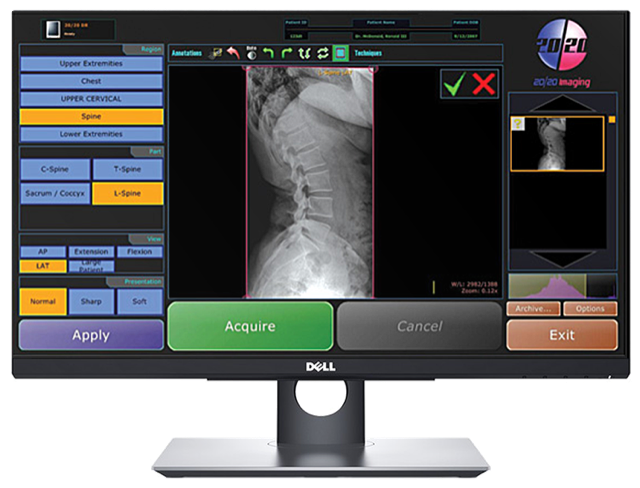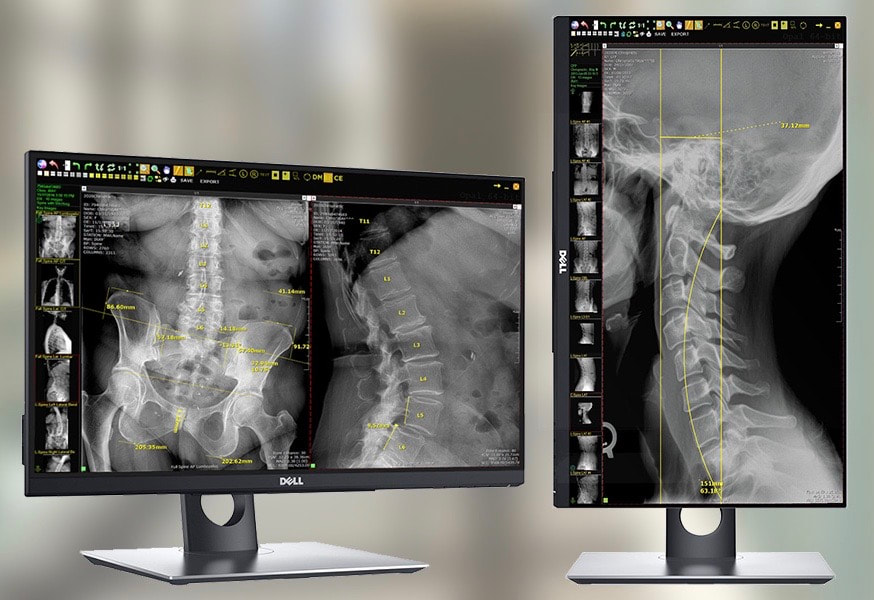Headaches22,000,000 million people suffer from headaches every year. Headaches are often triggered by disruptions in the neck related to the spine. At Northern Michigan Spine we take great pride in doing a thorough head and neck screening for headaches.
Many of us are familiar with some form of the throbbing, uncomfortable, and distracting pain of a headache. There are different types of headaches. This article will explain 10 different types of headaches:
|
The Most Common Primary Headanes
Primary headaches occur when the pain in your head is the condition. In other words, your headache isn’t being triggered by something that your body is dealing with, like illness or allergies.
These headaches can be episodic or chronic:
1. Tension headaches
If you have a tension headache, you may feel a dull, aching sensation all over your head. It isn’t throbbing. Tenderness or sensitivity around your neck, forehead, scalp, or shoulder muscles also might occur.
Anyone can get a tension headache, and they’re often triggered by stress.
An over-the-counter (OTC) pain reliever may be all it takes to relieve your occasional symptoms. This includes:
When a tension headache becomes chronic, a different course of action may be suggested to address the underlying headache trigger.
2. Cluster headaches
Cluster headaches are characterized by severe burning and piercing pain. They occur around or behind one eye or on one side of the face at a time. Sometimes swelling, redness, flushing, and sweating can occur on the side that’s affected by the headache. Nasal congestion and eye tearing also often occur on the same side as the headache.
These headaches occur in a series. Each individual headache can last from 15 minutes to three hours. Most people experience one to four headaches a day, usually around the same time each day, during a cluster. After one headache resolves, another will soon follow.
A series of cluster headaches can be daily for months at a time. In the months between clusters, individuals are symptom-free. Cluster headaches are more common in the spring and fall. They are also three times more common in men.
Doctors aren’t sure what causes cluster headaches, but they do know some effective ways to treat the symptoms. Your doctor may recommend oxygen therapy, sumatriptan (Imitrex) or local anesthetic (lidocaine) to provide pain relief.
After a diagnosis is made, your doctor will work with you to develop a prevention plan. Corticosteroids, melatonin, topiramate (Topamax), and calcium channel blockers may put your cluster headaches into a period of remission.
3. Migraine
Migraine pain is an intense pulsing from deep within your head. This pain can last for days. The headache significantly limits your ability to carry out your daily routine. Migraine is throbbing and usually one-sided. People with migraine headaches are often sensitive to light and sound. Nausea and vomiting also usually occur.
Some migraine is preceded by visual disturbances. About one out of five people will experience these symptoms before the headache starts. Known as an aura, it may cause you to see:
Migraine attacks might run in your family, or they can be associated with other nervous system conditions. Women are three times more likely to develop migraine than men. People with post-traumatic stress disorder also have an increased risk for migraine.
Certain environmental factors, such as sleep disruption, dehydration, skipped meals, some foods, hormone fluctuations, and exposure to chemicals are common migraine triggers.
If OTC pain relievers don’t reduce your migraine pain during an attack, your doctor might prescribe triptans. Triptans are drugs that decrease inflammation and change the flow of blood within your brain. They come in the form of nasal sprays, pills, and injections.
Popular options include:
Research shows that preventative medications are significantly underused. Only 3 to 13 percent of those with migraine take preventive medication, while up to 38 percent actually need it. Preventing migraine greatly improves quality of life and productivity.
Useful preventative medications include:
These headaches can be episodic or chronic:
- Episodic headaches may occur every so often or even just once in a while. They can last anywhere from half an hour to several hours.
- Chronic headaches are more consistent. They occur most days out of the month and can last for days at a time. In these cases, a pain management plan is necessary.
1. Tension headaches
If you have a tension headache, you may feel a dull, aching sensation all over your head. It isn’t throbbing. Tenderness or sensitivity around your neck, forehead, scalp, or shoulder muscles also might occur.
Anyone can get a tension headache, and they’re often triggered by stress.
An over-the-counter (OTC) pain reliever may be all it takes to relieve your occasional symptoms. This includes:
- aspirin
- ibuprofen (Advil)
- naproxen (Aleve)
- acetaminophen and caffeine, like Excedrin Tension Headache
When a tension headache becomes chronic, a different course of action may be suggested to address the underlying headache trigger.
2. Cluster headaches
Cluster headaches are characterized by severe burning and piercing pain. They occur around or behind one eye or on one side of the face at a time. Sometimes swelling, redness, flushing, and sweating can occur on the side that’s affected by the headache. Nasal congestion and eye tearing also often occur on the same side as the headache.
These headaches occur in a series. Each individual headache can last from 15 minutes to three hours. Most people experience one to four headaches a day, usually around the same time each day, during a cluster. After one headache resolves, another will soon follow.
A series of cluster headaches can be daily for months at a time. In the months between clusters, individuals are symptom-free. Cluster headaches are more common in the spring and fall. They are also three times more common in men.
Doctors aren’t sure what causes cluster headaches, but they do know some effective ways to treat the symptoms. Your doctor may recommend oxygen therapy, sumatriptan (Imitrex) or local anesthetic (lidocaine) to provide pain relief.
After a diagnosis is made, your doctor will work with you to develop a prevention plan. Corticosteroids, melatonin, topiramate (Topamax), and calcium channel blockers may put your cluster headaches into a period of remission.
3. Migraine
Migraine pain is an intense pulsing from deep within your head. This pain can last for days. The headache significantly limits your ability to carry out your daily routine. Migraine is throbbing and usually one-sided. People with migraine headaches are often sensitive to light and sound. Nausea and vomiting also usually occur.
Some migraine is preceded by visual disturbances. About one out of five people will experience these symptoms before the headache starts. Known as an aura, it may cause you to see:
- flashing lights
- shimmering lights
- zigzag lines
- stars
- blind spots
Migraine attacks might run in your family, or they can be associated with other nervous system conditions. Women are three times more likely to develop migraine than men. People with post-traumatic stress disorder also have an increased risk for migraine.
Certain environmental factors, such as sleep disruption, dehydration, skipped meals, some foods, hormone fluctuations, and exposure to chemicals are common migraine triggers.
If OTC pain relievers don’t reduce your migraine pain during an attack, your doctor might prescribe triptans. Triptans are drugs that decrease inflammation and change the flow of blood within your brain. They come in the form of nasal sprays, pills, and injections.
Popular options include:
- sumatriptan (Imitrex)
- rizatriptan (Maxalt)
- rizatriptan (Axert)
Research shows that preventative medications are significantly underused. Only 3 to 13 percent of those with migraine take preventive medication, while up to 38 percent actually need it. Preventing migraine greatly improves quality of life and productivity.
Useful preventative medications include:
- propranolol (Inderal)
- metoprolol (Toprol)
- topiramate (Topamax)
- amitriptyline
ON-SITE DIGITAL XRAY
Ready to find relief?
Life is too short to live in pain. If you’ve been recommended spine surgery, we want to provide you an alternative to spinal fusion that minimizes complications and ensures optimal and lasting results. Take advantage of our innovative treatments that help people just like you avoid joint replacement and other invasive surgeries, allowing them to get back to doing the activities they love, faster and without surgery.
Meet The Doctors

Dr. MJ Wegmann graduated on the Dean’s List from the world’s most prestigious chiropractic school; Palmer College of Chiropractic. Dr. MJ Wegmann and his wife Dr. Kallie Wegmann founded Discover Chiropractic in 2004.
Dr. Wegmann utilizes a contemporary, evidence-based chiropractic technique called CBP; Chiropractic Bio-Physics. CBP is the most published technique within the Index Medicus in the history of chiropractic. CBP has more published papers in peer-reviewed journals than all other techniques combined.
Spinal Correction
It’s an unfortunate scientific fact that a spine out of alignment deteriorates far more rapidly than a spine in alignment. If your spine is in its appropriate position, it will actually experience little if any degeneration at all. Your spine was designed to work within the laws of gravity and last a very long time in good health. Because the spine houses your nervous system; a healthy spine = healthy muscles, organs, and even effects mood. Therefore, a spine out of alignment can do more than just hurt or develop arthritis, studies show it also leads to sickness and disease.
Using the models published in the Index Medicus of a normal, healthy spine and nervous system, we utilize techniques designed to correct the spine or restore it back to normal. These techniques offer safe, comprehensive methods that rehabilitate the spine and associated soft tissues.
While some types of care may help you feel better, they don’t offer any real proof the spine and nervous system improved in structure and function. On the other hand, the most exciting part of the type of care our doctors provide is that you’ll not only subjectively improve, but objectively you’ll see that you’re body is actually healthier.
Maximized Living doctors certified in spinal correction utilize x-rays for diagnosing along with other types of tests like range of motion and muscle and thermal scans. This allows the doctor and patient to visualize structural improvement as well as analyze functional progress.
Through both in-office and home care programs, the techniques that are taught allow for faster correction and even some level of re-generation. To make sure the process is successful and not hard to duplicate, we offer both physical and on-line support.
There are several good techniques in Chiropractic. We believe that the best ones offer spinal correction so we’ve made sure ML doctors are trained and ready to gently, safely, and effectively help you reach your health potential.
Nutrition Certification
With growing disease rates and rising health care costs, the current state of North Americans’ health in very poor – and all experts agree that poor nutrition is one of the major causes of the crisis. Diabetes, cancer, heart disease, and obesity are just a few of the hundreds of North American illnesses that have been shown to improve through better nutrition.
Maximized Living doctors are committed to teaching their patients specifically how to avoid dangers of the modern food supply. Therefore, it’s standard that each of our doctors is certified in nutrition.
The Maximized Living Nutrition Plans our doctors are trained in are helping hundreds of thousands of people reach their wellness goals. These goals include helping people reach their ideal weight and proper percentage of body fat and most importantly, find true health that is sustainable forever.
We’ve utilized thousands of resources over the past decade to pinpoint the most cutting edge, vital nutritional principles known today. More than that, our offices are “Living laboratories” that have proven what we do works to bring about the most desirable health benefits for people from every walk of life.
Maximized Living doctors attend 8 hours of continuing education each year in the field of clinical nutrition, studying the most advanced principles and current research in this field. Their training makes them natural experts in weight loss, nutritional supplementation, and hormone-based diets to optimize health.
As a patient, your doctor is prepared to identify your individual nutritional needs and recommend specific plans to address them. In conjunction with the highest level of patient care, your ML doctor will lead several seminars and workshops each year to assist you in transforming your lifestyle and nutrition habits.
Doctors Certified in Nutrition:
Dr. Wegmann utilizes a contemporary, evidence-based chiropractic technique called CBP; Chiropractic Bio-Physics. CBP is the most published technique within the Index Medicus in the history of chiropractic. CBP has more published papers in peer-reviewed journals than all other techniques combined.
Spinal Correction
It’s an unfortunate scientific fact that a spine out of alignment deteriorates far more rapidly than a spine in alignment. If your spine is in its appropriate position, it will actually experience little if any degeneration at all. Your spine was designed to work within the laws of gravity and last a very long time in good health. Because the spine houses your nervous system; a healthy spine = healthy muscles, organs, and even effects mood. Therefore, a spine out of alignment can do more than just hurt or develop arthritis, studies show it also leads to sickness and disease.
Using the models published in the Index Medicus of a normal, healthy spine and nervous system, we utilize techniques designed to correct the spine or restore it back to normal. These techniques offer safe, comprehensive methods that rehabilitate the spine and associated soft tissues.
While some types of care may help you feel better, they don’t offer any real proof the spine and nervous system improved in structure and function. On the other hand, the most exciting part of the type of care our doctors provide is that you’ll not only subjectively improve, but objectively you’ll see that you’re body is actually healthier.
Maximized Living doctors certified in spinal correction utilize x-rays for diagnosing along with other types of tests like range of motion and muscle and thermal scans. This allows the doctor and patient to visualize structural improvement as well as analyze functional progress.
Through both in-office and home care programs, the techniques that are taught allow for faster correction and even some level of re-generation. To make sure the process is successful and not hard to duplicate, we offer both physical and on-line support.
There are several good techniques in Chiropractic. We believe that the best ones offer spinal correction so we’ve made sure ML doctors are trained and ready to gently, safely, and effectively help you reach your health potential.
Nutrition Certification
With growing disease rates and rising health care costs, the current state of North Americans’ health in very poor – and all experts agree that poor nutrition is one of the major causes of the crisis. Diabetes, cancer, heart disease, and obesity are just a few of the hundreds of North American illnesses that have been shown to improve through better nutrition.
Maximized Living doctors are committed to teaching their patients specifically how to avoid dangers of the modern food supply. Therefore, it’s standard that each of our doctors is certified in nutrition.
The Maximized Living Nutrition Plans our doctors are trained in are helping hundreds of thousands of people reach their wellness goals. These goals include helping people reach their ideal weight and proper percentage of body fat and most importantly, find true health that is sustainable forever.
We’ve utilized thousands of resources over the past decade to pinpoint the most cutting edge, vital nutritional principles known today. More than that, our offices are “Living laboratories” that have proven what we do works to bring about the most desirable health benefits for people from every walk of life.
Maximized Living doctors attend 8 hours of continuing education each year in the field of clinical nutrition, studying the most advanced principles and current research in this field. Their training makes them natural experts in weight loss, nutritional supplementation, and hormone-based diets to optimize health.
As a patient, your doctor is prepared to identify your individual nutritional needs and recommend specific plans to address them. In conjunction with the highest level of patient care, your ML doctor will lead several seminars and workshops each year to assist you in transforming your lifestyle and nutrition habits.
Doctors Certified in Nutrition:
- Fully understand the dangers in the current food supply and are able to help their patients understand and avoid them.
- Are able to identify an individual’s current nutritional deficiencies and needs and are able to develop a customized plan to address these needs.
- Have extensive training on the most effective nutritional strategies for sustainable weight loss. While many other weight loss plans may elicit some degree of short term weight loss, they are not designed for long term health. Maximized Living doctors focus on the long term best interests of each individual. These weight loss strategies have resulted in thousands of people losing the necessary weight while being able to maintain the changes to build a healthy future.
- Have the ability to design nutritional changes and recommendations that can balance and regulate hormones for weight loss and for specific health challenges.
- Design short and long term, specific nutritional strategies for preventing and even reversing diseases like diabetes, heart disease, and cancer.
- Continually receive the most up to date, cutting edge research on nutrition, weight loss, hormones, and disease prevention.
- Can provide individual counseling, tools, workshops, resources, and practical guides to assist people in applying the necessary changes to their current lifestyles.
- Are trained to offer specific supplementation recommendations tailored to an individual’s current needs
- Have access to the Maximized Living network of resources.


